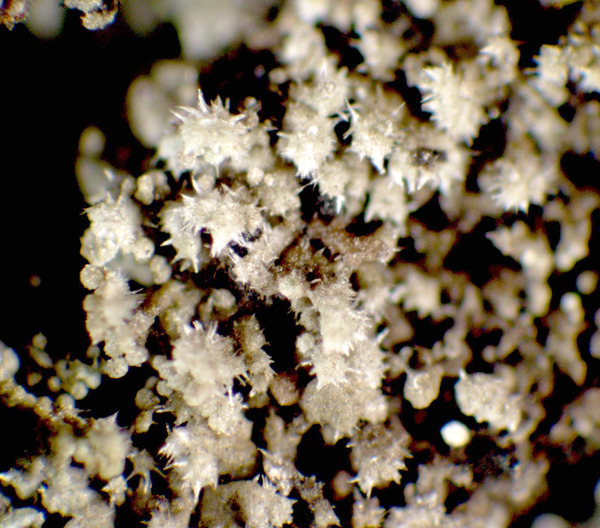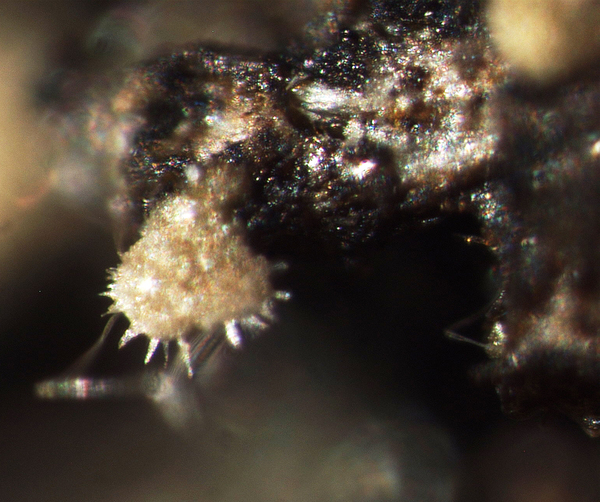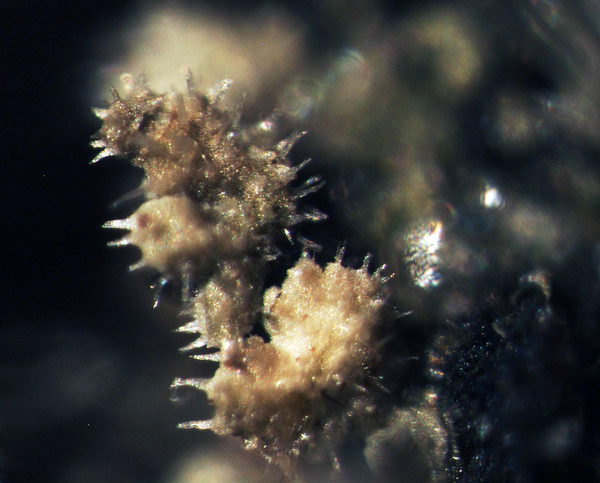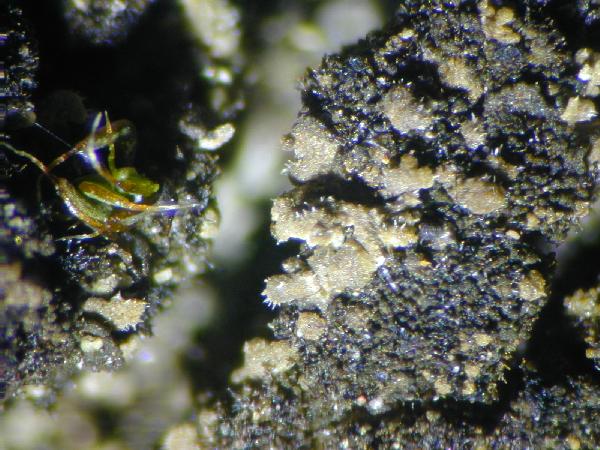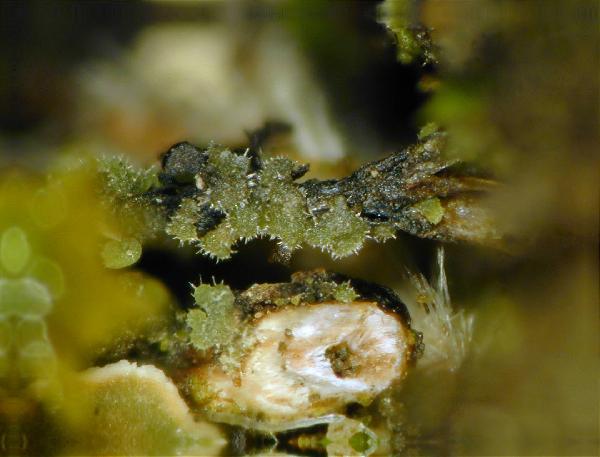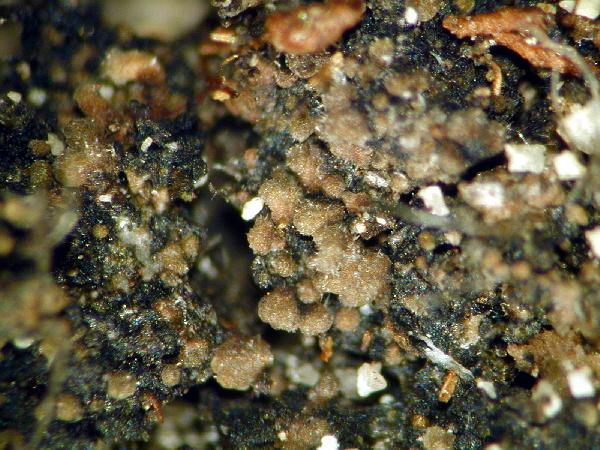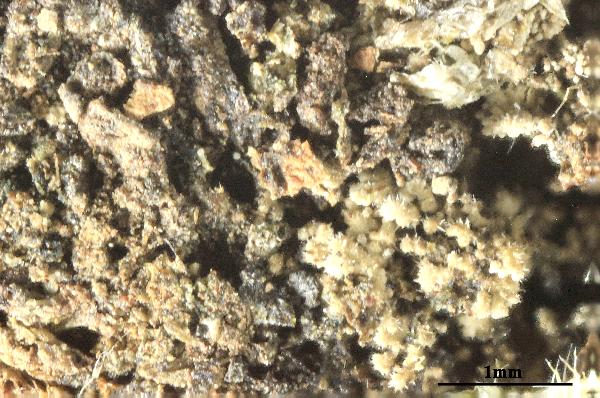Agonimia opuntiella (Buschardt & Poelt) Vězda
Sched. ad Lich. Rar. Exs., 330: 4, 1997. Basionym: Physcia opuntiella Buschardt & Poelt in Poelt - Flora, 169: 24, 1980.
Synonyms: Phaeophyscia opuntiella (Buschardt & Poelt) Hafellner
Distribution: N - VG, Frl, Ven (Nascimbene & al. 2021), TAA (Nascimbene & al. 2007b, 2014, Nascimbene 2014), Lomb (Hafellner 2014b), Emil (Nimis & al. 1996, Fariselli & al. 2020). C - Tosc (Brackel 2015, Fačkovcová & al. 2024), Umb (Genovesi & al. 2002, Ravera & al. 2006), Laz (Ravera 2001, Munzi & al. 2007, Ravera & Genovesi 2008), Mol (Caporale & al. 2018, Caporale & Ravera 2020). Sar (Ravera & al. 2022). S - Camp (Ravera & al. 2017b), Si (Ravera & al. 2023b).
Description: Thallus squamulose, grey to brownish- or greenish-grey, loosely attached, the squamules 0.1-0.3(-0.4) mm broad, bullate to slightly flattened, entire to crenate, dispersed or grouped, often articulate in the form of a Opuntia, densely covered in thin transparent hairs, sometimes blastidiate. Thallus paraplectenchymatous throughout, with a brown pseudocortex, overlain by an epinecral layer of isodiametric, 6-10.5 μm wide, conspicuously papillate cells. Perithecia very rare, black, pyriform, without involucrellum, located between the squamules, 0.3-0.4 mm across (in section), with a rugose surface. Exciple distinctly 3-layered, with an outer layer of rounded, heavily pigmented cells, a median layer of similar, but unpigmented cells, and an inner layer of elongated, colourless cells; hamathecium of periphyses and periphysoids, interascal filaments absent; hymenial gel hemiamyloid. Asci (1-)2-spored, clavate, thin-walled, fissitunicate with a very thin exoascus, surrounded by a hemiamyloid gel. Ascospores muriform, at first hyaline, finally sometimes turning pale brown, ellipsoid, 60-70 x 25-28 μm. Photobiont chlorococcoid. Spot tests: K-, C-, KC-, P-, UV-. Chemistry: without lichen substances. Note: a mild-temperate species found on terricolous mosses and plant debris over calcareous substrata, sometimes amongst mosses on basal parts of old trees, from the Mediterranean to the montane belt.
Growth form: Squamulose
Substrata: bark, soil, terricolous mosses, and plant debris
Photobiont: green algae other than Trentepohlia
Reproductive strategy: mainly sexual
Commonnes-rarity: (info)
Alpine belt: absent
Subalpine belt: absent
Oromediterranean belt: absent
Montane belt: extremely rare
Submediterranean belt: very rare
Padanian area: absent
Humid submediterranean belt: rare
Humid mediterranean belt: extremely rare
Dry mediterranean belt: absent

Predictive model
Herbarium samples
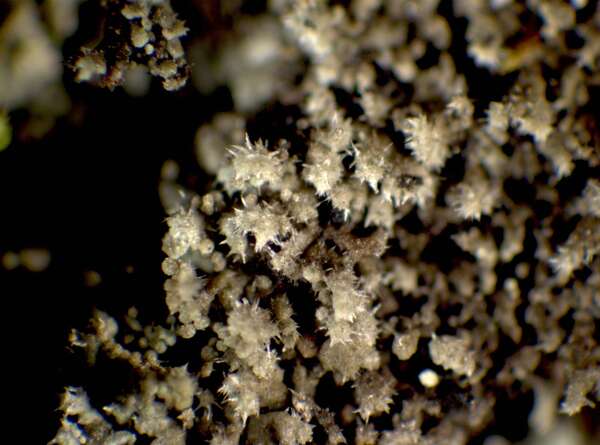

P.L. Nimis; Owner: Department of Life Sciences, University of Trieste
Herbarium: TSB (33902)
2001/12/07
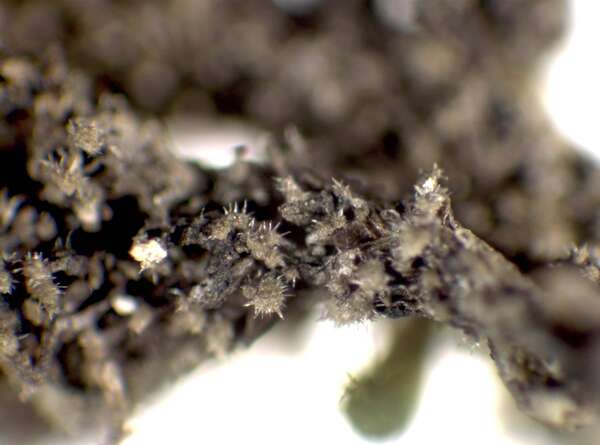

P.L. Nimis; Owner: Department of Life Sciences, University of Trieste
Herbarium: TSB (33902)
2001/12/07
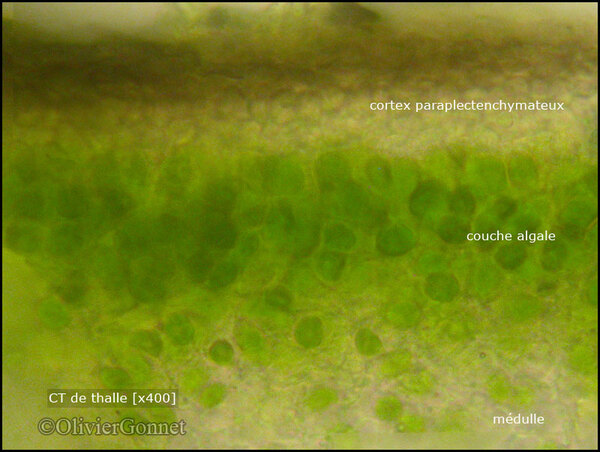
courtesy Olivier & Danièle Gonnet - Source: https://www.afl-lichenologie.fr/Photos_AFL/Photos_AFL_A/Textes_A2/Agonimia_opuntiella.htm
France, Bonifacio, ermitage de la Trinité, alt. 130 m, sur hépatiques en amas épais - Corse
3/12/2014
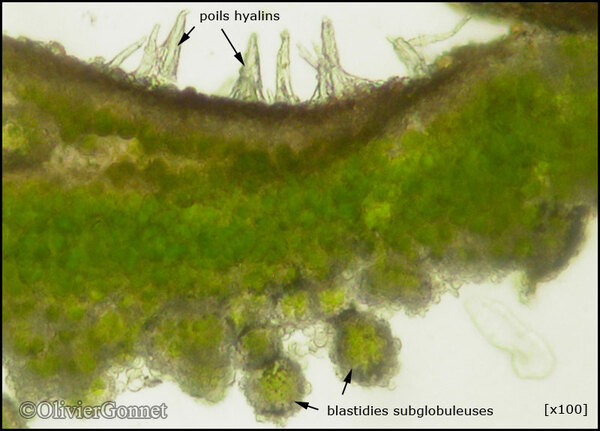
courtesy Olivier & Danièle Gonnet - Source: https://www.afl-lichenologie.fr/Photos_AFL/Photos_AFL_A/Textes_A2/Agonimia_opuntiella.htm
France, Bonifacio, ermitage de la Trinité, alt. 130 m, sur hépatiques en amas épais - Corse
3/12/2014

courtesy Olivier & Danièle Gonnet - Source: https://www.afl-lichenologie.fr/Photos_AFL/Photos_AFL_A/Textes_A2/Agonimia_opuntiella.htm
France, Bonifacio, ermitage de la Trinité, alt. 130 m, sur hépatiques en amas épais - Corse
3/12/2014
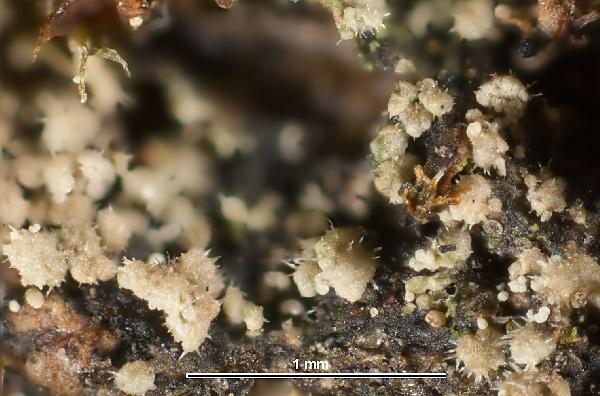
Ulrich Kirschbaum CC BY-SA 4.0 - Source: https://www.thm.de/lse/ulrich-kirschbaum/flechtenbilder
On calcareous soil, between mosses.Central Europe; Germany: Hesse. 150 m above sea level.(Coll/ident: Eichler/Cezanne).
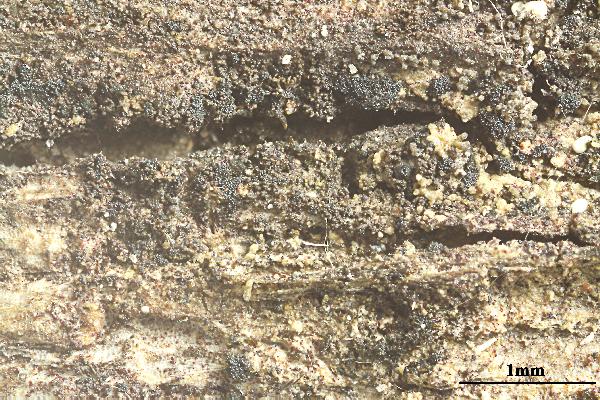

Felix Schumm - CC BY-SA 4.0
[ABL42718A], Brazil, Alagoas, Quebrangulo, Pedra Talhada private
area. In Atlantic rain forest on tree bark. 9°15’ S, 36°25’35’’ W, 500-700
m. Leg. M. Cáceres & A. Aptroot (no 42718A), 21-23.10.2017. Det. A.
Aptroot, 2017.
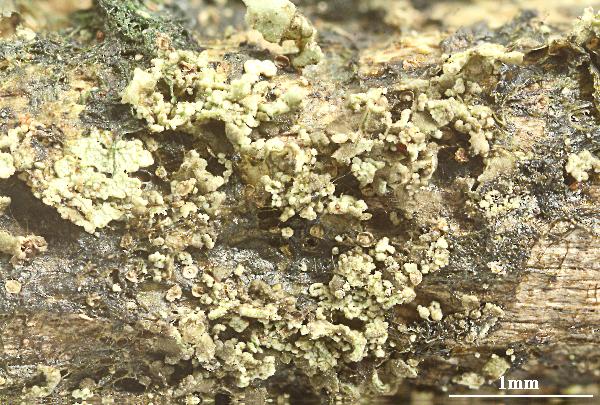

Felix Schumm - CC BY-SA 4.0
[ABL50927], Brazil, Alagoas, Quebrangulo, Pedra Talhada, Serra do
Boi. On twig in Atlantic rain forest. 9°14’28’’ S, 36°25’11’’ W, 800 m.
Leg. M. Cáceres, A. Aptroot (no 50927) & J.G. Cavalcante, 25.07.2019.
Det. A. Aptroot, 2019.


Felix Schumm - CC BY-SA 4.0
[VZR247], Bohemia centr. Rakovník, regio K ivoklátsko, loco dicto
Certova skála, ad plantas emortuas et ad terra, in rupibus epiliticis, 315
m. Leg. & det, Jama Horáková. EX A. VEZDA: LICHENES RARIORES
EXSICCATI NR. 247.
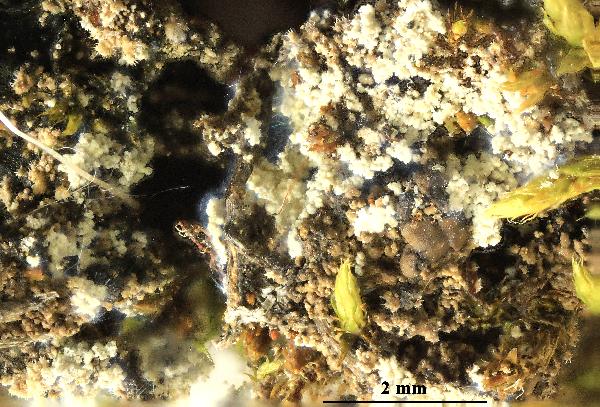

Felix Schumm - CC BY-SA 4.0
[VZR247], Bohemia centr. Rakovník, regio K ivoklátsko, loco dicto
Certova skála, ad plantas emortuas et ad terra, in rupibus epiliticis, 315
m. Leg. & det, Jama Horáková. EX A. VEZDA: LICHENES RARIORES
EXSICCATI NR. 247.
Growth form: Squamulose
Substrata: bark, soil, terricolous mosses, and plant debris
Photobiont: green algae other than Trentepohlia
Reproductive strategy: mainly sexual
Commonnes-rarity: (info)
Alpine belt: absent
Subalpine belt: absent
Oromediterranean belt: absent
Montane belt: extremely rare
Submediterranean belt: very rare
Padanian area: absent
Humid submediterranean belt: rare
Humid mediterranean belt: extremely rare
Dry mediterranean belt: absent

Predictive model
| Herbarium samples |


P.L. Nimis; Owner: Department of Life Sciences, University of Trieste
Herbarium: TSB (33902)
2001/12/07


P.L. Nimis; Owner: Department of Life Sciences, University of Trieste
Herbarium: TSB (33902)
2001/12/07

courtesy Olivier & Danièle Gonnet - Source: https://www.afl-lichenologie.fr/Photos_AFL/Photos_AFL_A/Textes_A2/Agonimia_opuntiella.htm
France, Bonifacio, ermitage de la Trinité, alt. 130 m, sur hépatiques en amas épais - Corse
3/12/2014

courtesy Olivier & Danièle Gonnet - Source: https://www.afl-lichenologie.fr/Photos_AFL/Photos_AFL_A/Textes_A2/Agonimia_opuntiella.htm
France, Bonifacio, ermitage de la Trinité, alt. 130 m, sur hépatiques en amas épais - Corse
3/12/2014

courtesy Olivier & Danièle Gonnet - Source: https://www.afl-lichenologie.fr/Photos_AFL/Photos_AFL_A/Textes_A2/Agonimia_opuntiella.htm
France, Bonifacio, ermitage de la Trinité, alt. 130 m, sur hépatiques en amas épais - Corse
3/12/2014

Ulrich Kirschbaum CC BY-SA 4.0 - Source: https://www.thm.de/lse/ulrich-kirschbaum/flechtenbilder
On calcareous soil, between mosses.Central Europe; Germany: Hesse. 150 m above sea level.(Coll/ident: Eichler/Cezanne).


Felix Schumm - CC BY-SA 4.0
[ABL42718A], Brazil, Alagoas, Quebrangulo, Pedra Talhada private area. In Atlantic rain forest on tree bark. 9°15’ S, 36°25’35’’ W, 500-700 m. Leg. M. Cáceres & A. Aptroot (no 42718A), 21-23.10.2017. Det. A. Aptroot, 2017.


Felix Schumm - CC BY-SA 4.0
[ABL50927], Brazil, Alagoas, Quebrangulo, Pedra Talhada, Serra do Boi. On twig in Atlantic rain forest. 9°14’28’’ S, 36°25’11’’ W, 800 m. Leg. M. Cáceres, A. Aptroot (no 50927) & J.G. Cavalcante, 25.07.2019. Det. A. Aptroot, 2019.


Felix Schumm - CC BY-SA 4.0
[VZR247], Bohemia centr. Rakovník, regio K ivoklátsko, loco dicto Certova skála, ad plantas emortuas et ad terra, in rupibus epiliticis, 315 m. Leg. & det, Jama Horáková. EX A. VEZDA: LICHENES RARIORES EXSICCATI NR. 247.


 INDEX FUNGORUM
INDEX FUNGORUM
 GBIF
GBIF
 DOLICHENS
DOLICHENS
